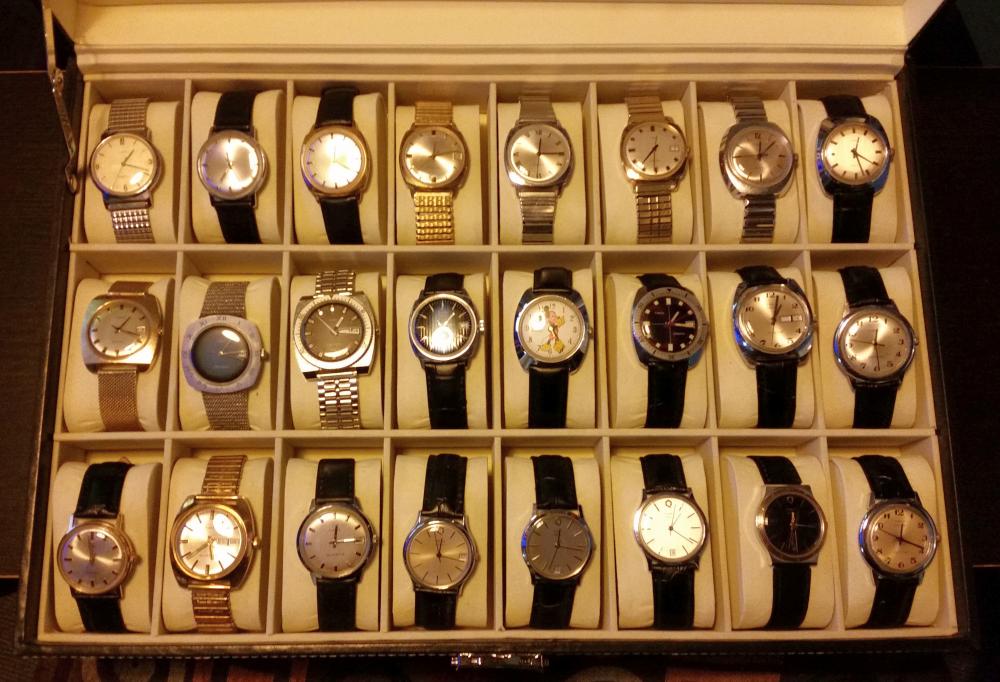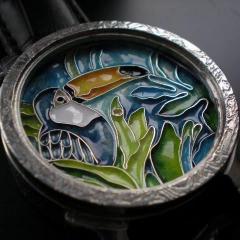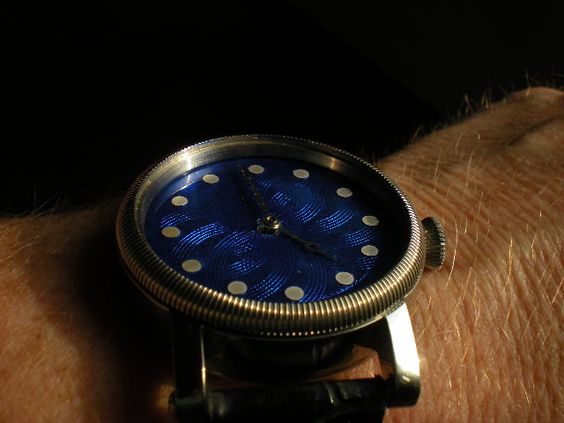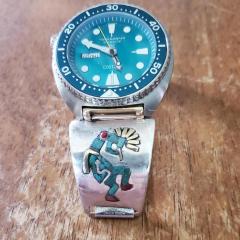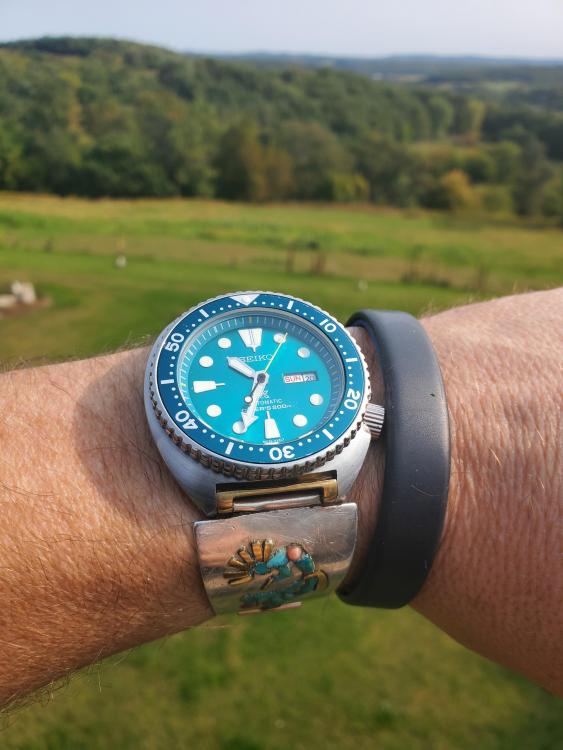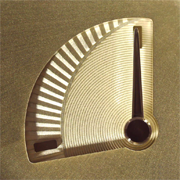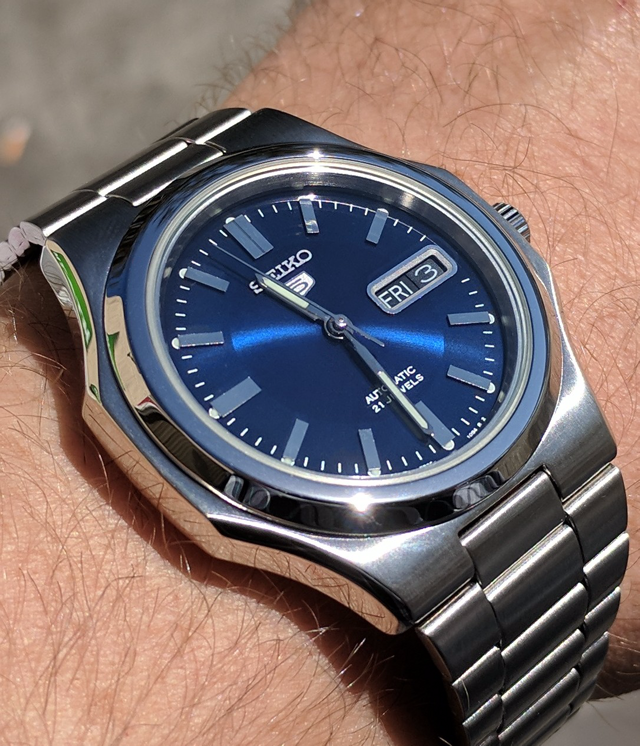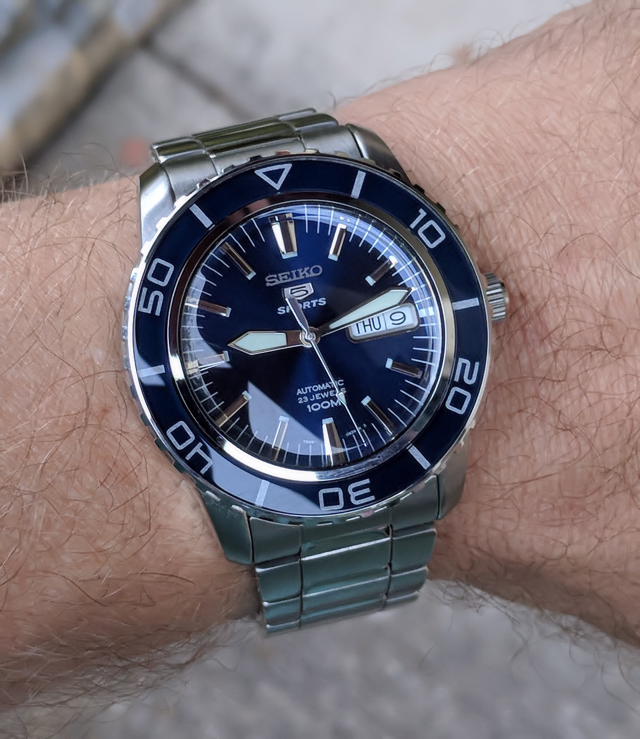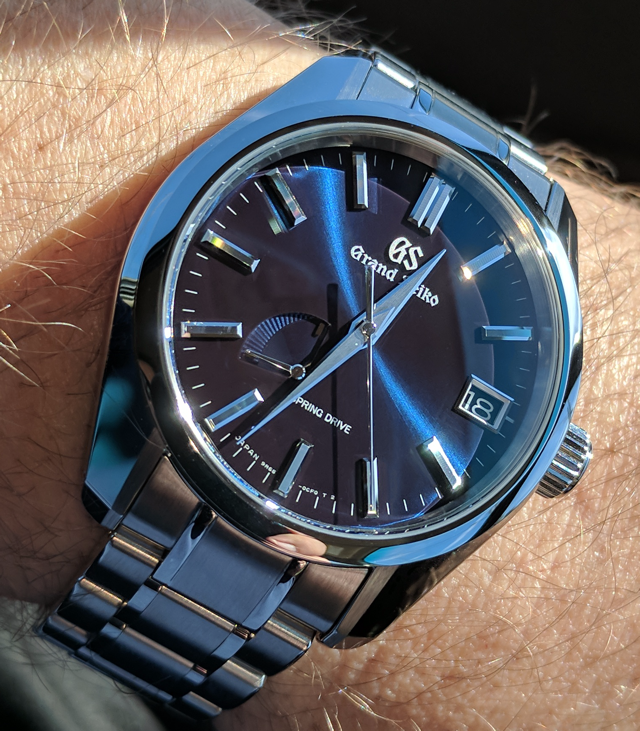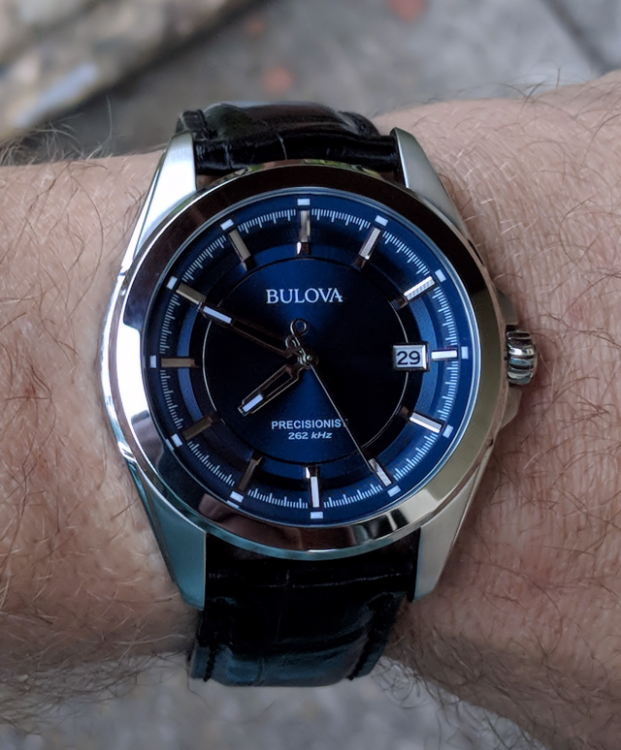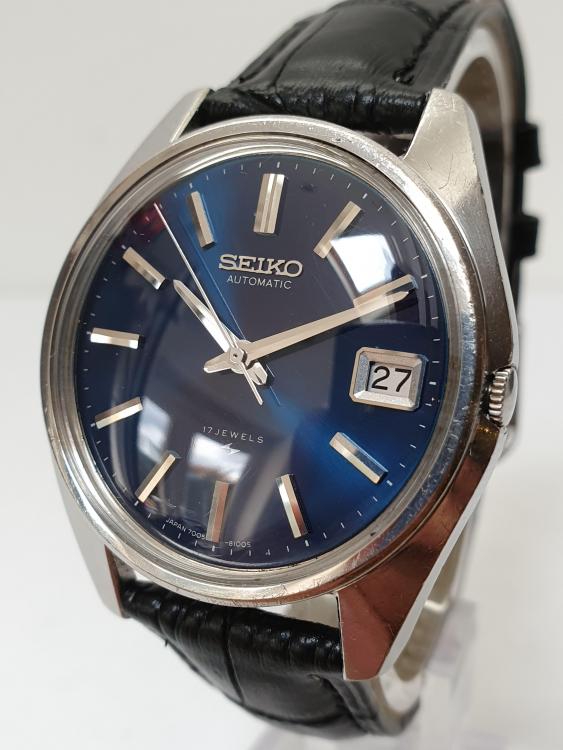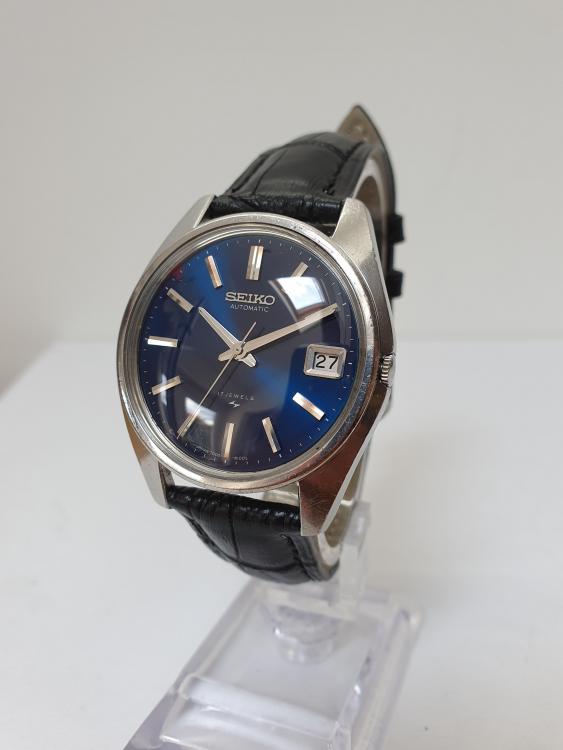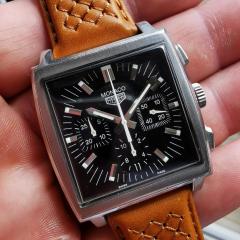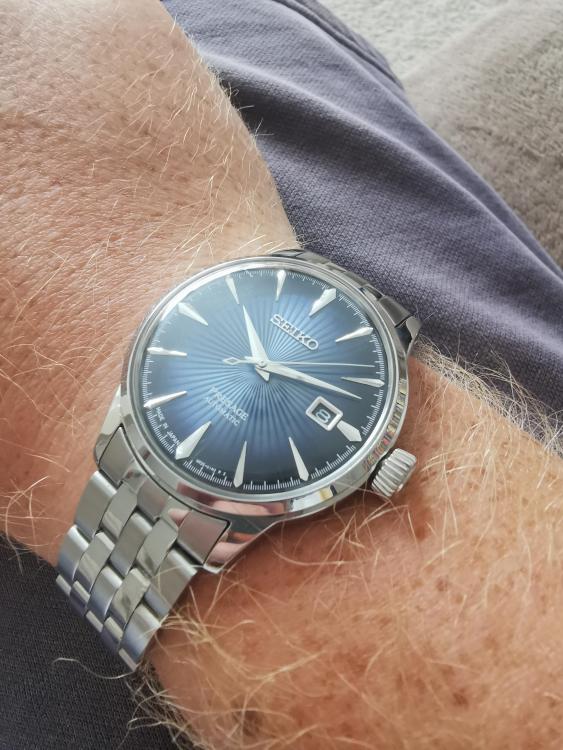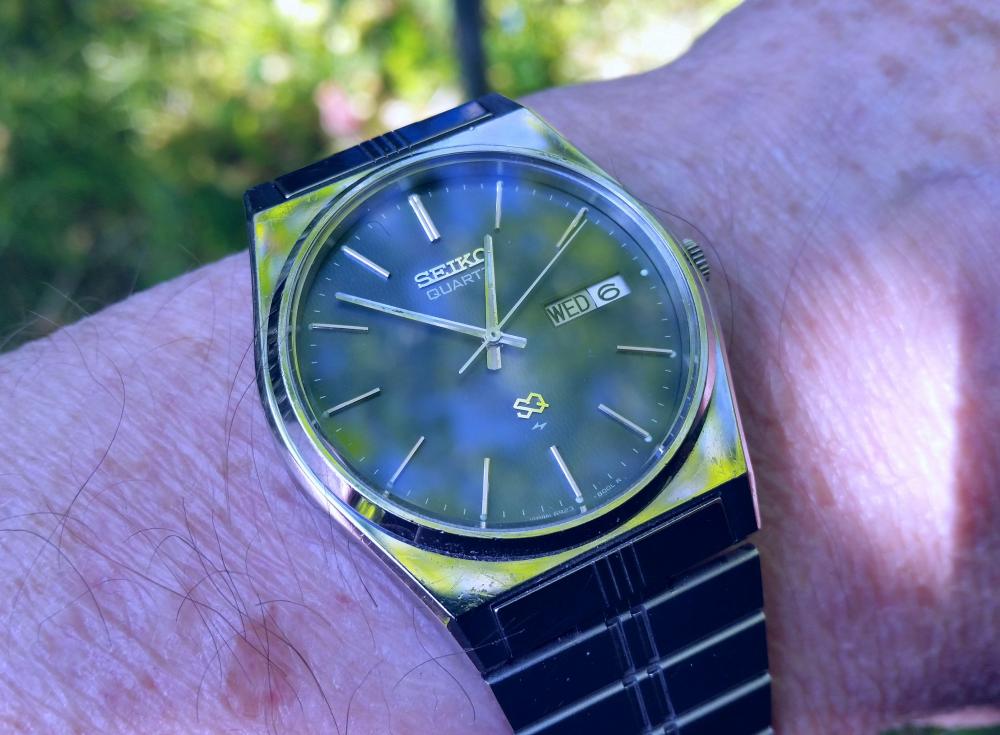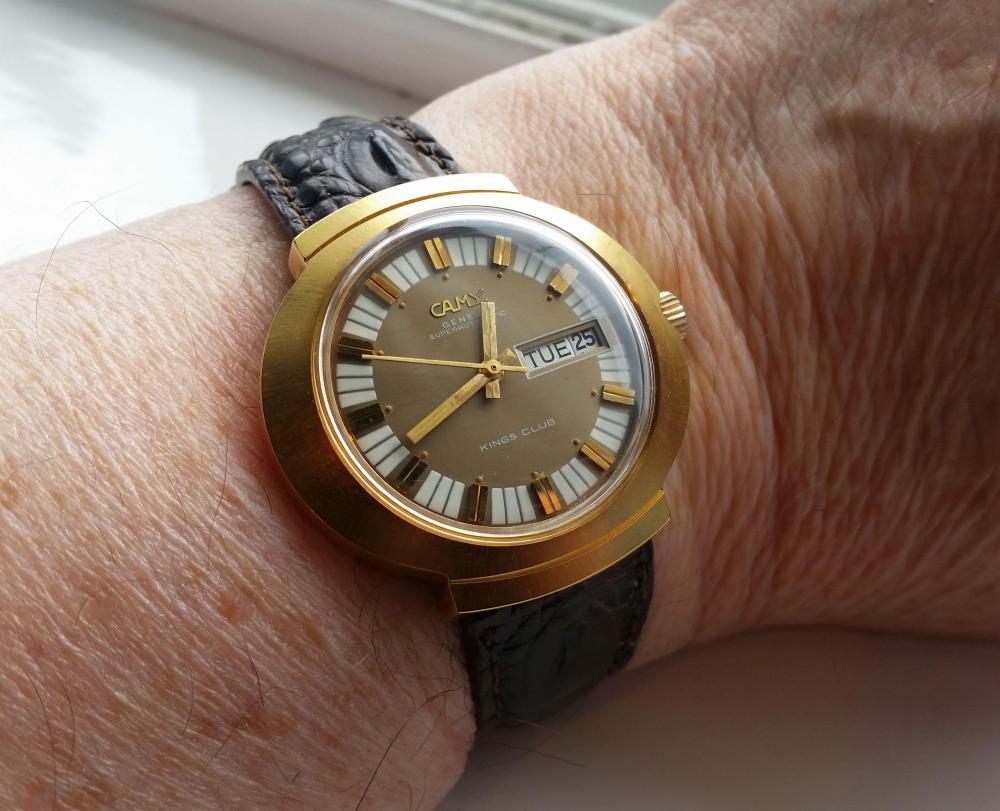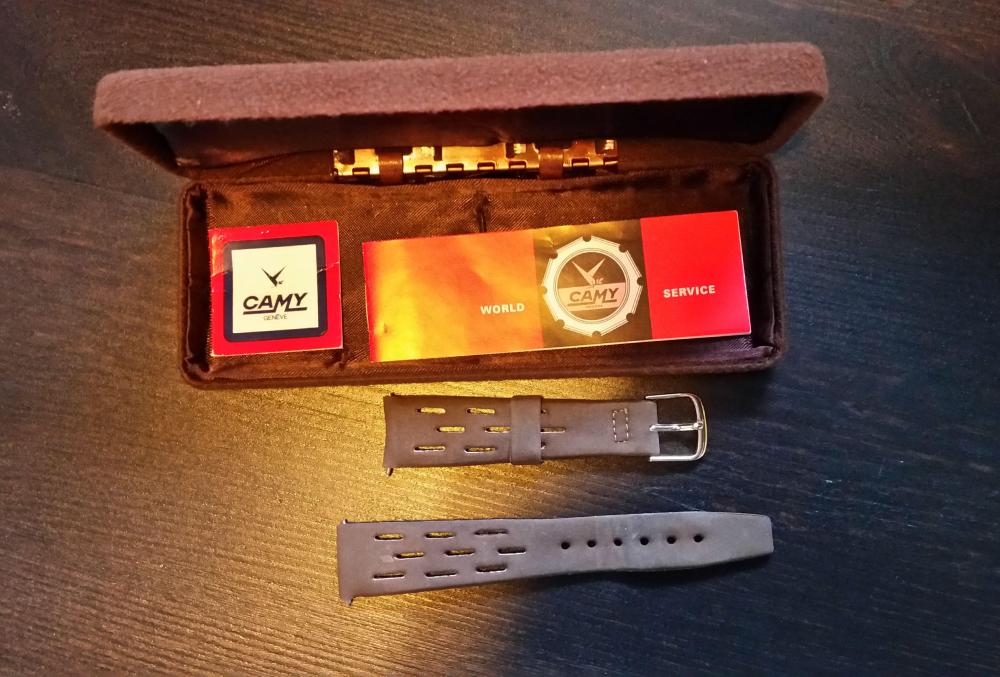Leaderboard
Popular Content
Showing content with the highest reputation on 12/12/20 in Posts
-
4 points
-
2 points
-
2 points
-
2 points
-
Welcome here. As far as I know Mark is not taking repair work at this time and isn't a matter of recommendation. If you want to confirm that with him directly just use use Private Message. Your watch is very old and should be completely overhauled. Unfortunately the difficulty and tools required for that are way above a beginner's level as you can see from the video below, so I'm afraid that you will have to give it to a professional for a cost higher than actual value of the watch, or keep it pretty much as it is.2 points
-
2 points
-
2 points
-
Sounds like the center of the minute hand which in many is friction tight and it has moved which causes the chimes to be out of line with the dial. you can repair this by putting the minute hand on a square file and move the hand center to the right place and then tighten the center with a few taps with a small hammer.1 point
-
I don't believe that value would decrease at all. Not according to pocketwatchdatabasedotcom1 point
-
All they say on this is that the Seiko P/N is discontinued and no replacements are available. So it seems that only Maxell remains selling it, they were anyway the one making it originally. What a shame Seiko, owning a battery factory (Seikazen) and letting your customers down after a few years of owning one of your expensive and innovative watches.1 point
-
1 point
-
This is a seiko,lorus battery chart check the battery dimensions. As Poljot mentioned its just a bit of a poor design battery-no-cross-reference-chart.pdf1 point
-
And nothing is missing. Place the battery in, close the back cover - it will keep the battery in place. Not so good design.1 point
-
1 point
-
The dial or as you call it the face is attached with dial feet. Occasionally the feet break then the dial is free to rotate. We would really need the movement number as I don't think things are going to work out quite as simple as you think. If the dial feet are broken off it will require a new dial. If as it's a eco-drive Maybe the dial doesn't have normal feet because it has a solar panel somewhere but we would need the movement number. Then if somebody has been in the watch before you playing with it all bets are off because anyone who didn't know what they're doing probably is destroyed the watch. So will need a movement number. In the absence of a movement number I really good picture of the movement itself and maybe we can work out what the number is and how to release the stem which is what's holding the crown in place.1 point
-
Usually when dealing with American watches especially the older pocket watches swapping components Is undesirable. Even though you can have a wonderful parts listed indicates that all the parts will interchange because are mass-produced. But then in the older watches they typically hand fit the component so they may have been modified slightly. Then there were made in batches and there's going to be variations between the batches depending upon when they were made it but it watch being new war shouldn't perhaps have those issues.1 point
-
By looking at the parts list - you should be able to swap both, the cannon pinion and hour wheel. Hope the Hands dia remains the same.1 point
-
There is a minor problem with the article which is probably part of the confusion perhaps maybe? So the problem is what movement are we talking about? For instance quoting from the article we have this "H-10. This movement is Swiss made and is a modification of the ETA caliber C07.111, which itself is based on the well-known ETA 2824-2" To give you an idea about the C07.111 Movement I have a link to an article. Then I was looking at a different source which indicated the movement in the Hamilton is the Movement H-10, C07.611 Which is a little bit different than the C07.111 That can be found in the second link it looks like the escapement is different. Then to understanding the regulation aspect the fourth flank and I swiped a picture off the website which I'm attaching. It's one of their newer balance wheels which has timing weights on the arms. Ideally you're supposed to use a special tool to avoid breaking things. So of its using this balance wheel it can be regulated but probably most normal watchmakers would be confused and there's some minor setting changes the timing machine soever regulates it has to have a modern timing machine. But it's always possible that they did some other modification beyond this that may be does require a laser like if instead of having screws you had permanent weights that were lasered to remove the weights but I doubt that. They probably just don't want watch people inside of their movement. https://monochrome-watches.com/swatch-groups-powermatic-movement-a-powerful-entry-level-engine/ https://watchbase.com/eta/caliber/c07-611 https://watchbase.com/eta/caliber/c07-111 https://perpetual.tistory.com/301 point
-
1 point
-
If you have not seen this already (see attached): Elgin 554-556 parts list. p07-556 - Copy.pdf1 point
-
Do both your movements have same jewel counts? You might have two different variant, are bridge layouts same on both?1 point
-
Thank you for taking measurements to answer my previous questions. It appears that your existing mainspring is in excellent shape. It fits GR4186 description as it's somewhat challenging to take accurate measurements without a micrometer: 0.12mm could be easily 0.125mm. If it's not too late, please take ID measurement of the mainspring barrel. I am curious if it's 11mm or 11.5mm ID. You are correct in your assumption - mineral oils are great, more consistent with what was available at the time watches were design and manufactured. Mineral oils stay in place, provide excellent lubricity and as long as cleaning and oiling was done properly, you have nothing to worry about for many-many years. I always remove those plates. Why? Two reasons: - I usually see such design on "helpless" watches that people bring to me. I feel "obligated" ? to do proper cleaning - i bought many nice screwdrivers - I MUST use them ? Why such design? It was probably less expensive.1 point
-
1 point
-
http://www.learningaboutelectronics.com/Articles/Sine-wave-generator-circuit-with-a-555-timer.php Full details of a 555 sine wave generator. You would need to experiment with the components to get your 50 or 60 Hz, and you would also need to drive a transformer to produce your 110V or whatever your clock requires (a mains transformer run backwards with a suitable transistor and limiting resistor might be all you need, but don't quote me on that). Bear in mind that the output would be 110 or 240 V AC, and might give you a bit of a whack if you are not careful.1 point
-
Duh!! Crossed wires in brain. Don't know why I went down 1.2v route, agrees would be worse.?1 point
-
There are other simpler and or better ways to do this, but this method will produce 60 Hz as accurately as the clock requires. A simple microcotroller solution could provide 60Hz with the accuracy of the microcontroller quartz crystal, which is typically parts per million or better, much more accurate than sampling the 50Hz.1 point
-
1 point
-
Thanks,folks. The link-to docs above are super helpful. @watchweasol - many thanks! Funny. I am re-aligning how I think about money spent. After all, if I am willing to spend $500 on a watch, or on five watches, shouldn't I be happy to spend only $200 on lubricants to keep them all in tip top shape for years to come? And I see from the equipment list that Esslinger's and Amazon are going to be my new best friends. The kinds to whom I always owe money . . .?1 point
-
This photo was taken before I cleaned it (just wanted to give you guys something to work with for context) so it may have been gunked up but I'll take a closer look when I open it back up, thanks!1 point
-
Another thing to do is only partially assembled the watch. In other words only put in what is necessary to make the watch run don't put the Canon pinion on. Then it's also nice to have a timing machine put it on the timing machine see what it's doing and let it run overnight And then put it on the timing machine again and see what it's doing. Especially noticing the amplitude at the end of 24 hours.1 point
-
1 point
-
I have a pocketwatch like that too. It was due to a worn pivot hole. Haven't gotten down to rebushing or converting it into a jewelled hole. Good luck.1 point
-
Such tension can be easily explained if you didn't put some oil before replacing the cannon pinion. "pinching it a bit tighter" makes things worse.1 point
-
Perhaps stops when the power is low? also try winding it every 4 hours to about 80%. A bent tooth could be the issues as the mainspring turns around 7 times in a full wind and the tooth could go through when there is plenty of power and not when the power is at say 50%. Intermittent failures are the hardest.1 point
-
Welcome to the forum jdm's advice is spot on1 point
-
On the plate or on the plastic surround there will be a mark and a number that will be the maker of the movement and the caliber of the movement from that you can identify the battery required so that you get the correct one for the movement. If you could post the maker and caliber number it would be helpful.. The advice given by Hector is sound follow that and protect the coil and all will be well.1 point
-
Firstly, make sure you have the correct size battery. Next, of you look at this battery holder, there is a fixed side and a sprung side. You have to tilt the battery at an angle and get it in under the lip of the fixed side. Then use a toothpick or plastic stick to pull back the spring and drop the battery in completely. The drive coil is very close to the spring, so whatever you do, don't slip and damage the coil. Also, don't use a metal tweezer to hold the new battery ( as you may have seen in an instructional video on YouTube).1 point
-
Welcome to the forum. There are watchrepairlessons/ course by mark, feel free to ask any tech questions here. Regs Joe1 point
-
These tools can indeed bugger up threads, as they were often roughly made. More of a problem with gold balance screws. With a bit of care and some deburring around the inside of the hole though they do work. Same principle as undercutters for chronograph screws, though the main intent of the balance undercutter is to cut inside the head, leaving an invisible retouch and the chrono screw cutter cuts the whole underside. In reality the balance cutters almost always touch the entire surface. In both instances I prefer to use a lathe, with a cross slide, and know exactly how much material I have removed. The pocket watch bow cutter above is on a similar principle, but can form a pivot on a raw bow or reduce the pivot size on an existing bow. I've owned one of the pocket watch cutters since I was in school, and I think I've used it once or twice haha. But it really is the easiest way to put a pivot on a bow. This type of cutter is called a fraise a pivot in French, pivot cutter.1 point
-
1 point
-
1 point
-
1 point
-
1 point
-
1 point
-
I'm so glad this topic popped back up. I'm new here and hadn't seen it. Blue is probably my favorite dial color, in contention with champagne. Even so, looking through my collection I appear to only have 4 watches with blue dials. Then again, my collection seems like it's probably puny compared to some of you here. In order of acquisition: Seiko SNKK45 ("Seikonaut"): Seiko SNZH53: Grand Seiko SBGA375 (it's hard to coax the blue out of this one - it looks black most of the time - had to get in bright sunlight for this picture): Bulova Precisionist 96B257:1 point
-
1 point
-
1 point
-
Back on 'blue dialled watches', I finished sorting this one out today, day and date change were 12 hours apart . Turned out to be that the day change finger had somehow jumped over its stop on the plastic date change finger..... Anyway once working correctly it deserved a nice new crystal and some wrist time.. Its a 6923-8000 from June 1982, not a quartz calibre that I've come across before, rather surprised to find that the usual bronze 'C' clip that usually is used to hold the day wheel down had been replaced with, a very much more expensive to produce, solid ring with a sort of collet on the bottom, that clips onto the tube when pushed down..........1 point
-
1 point

.jpg.183c04e02542d727b31bfc38e20b8ef6.jpg)
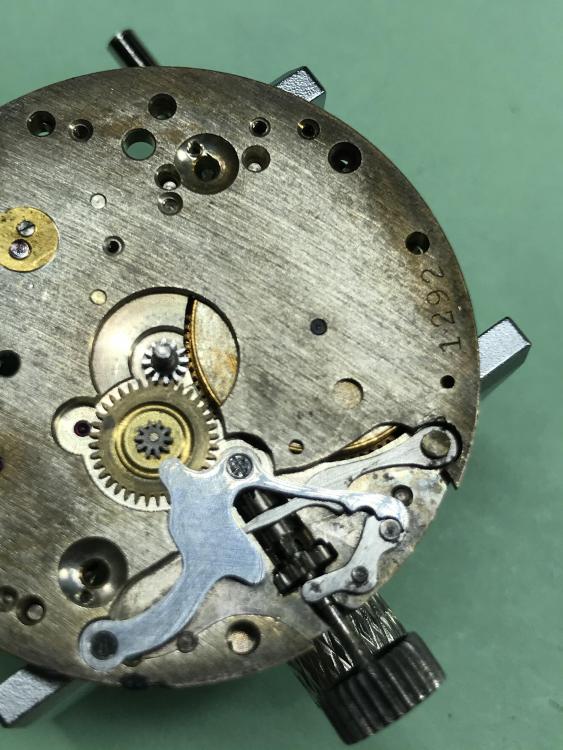
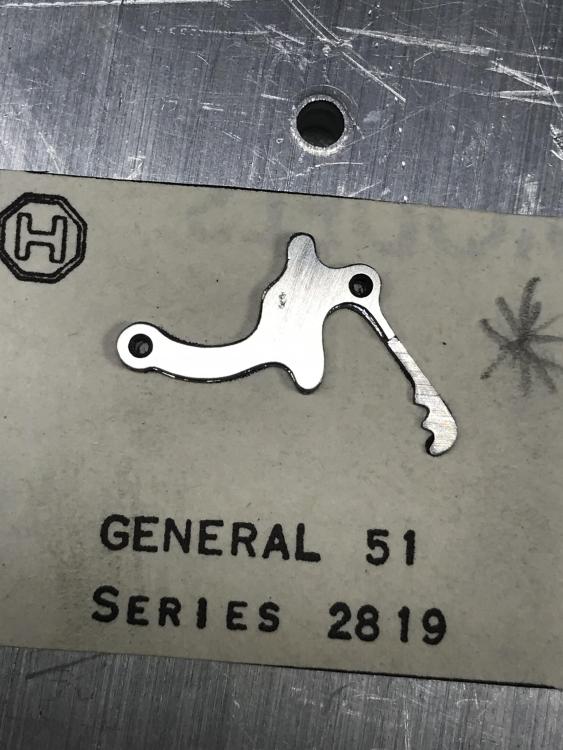
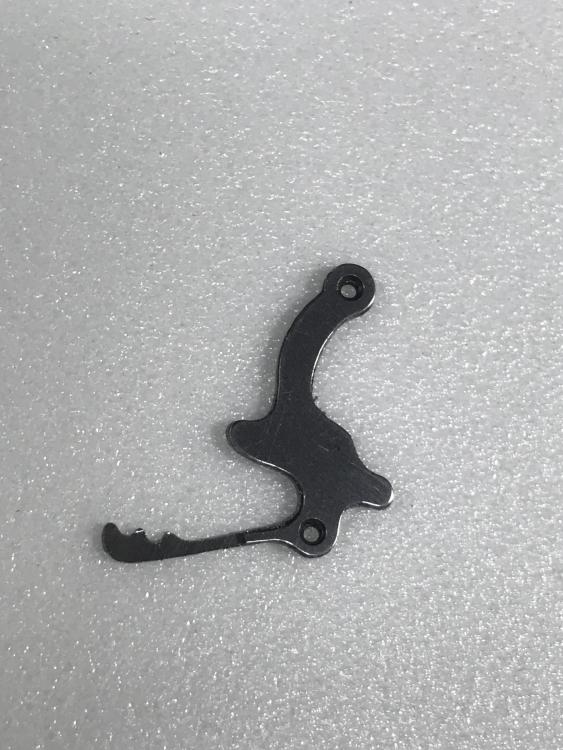

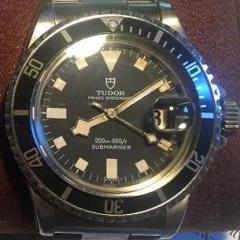
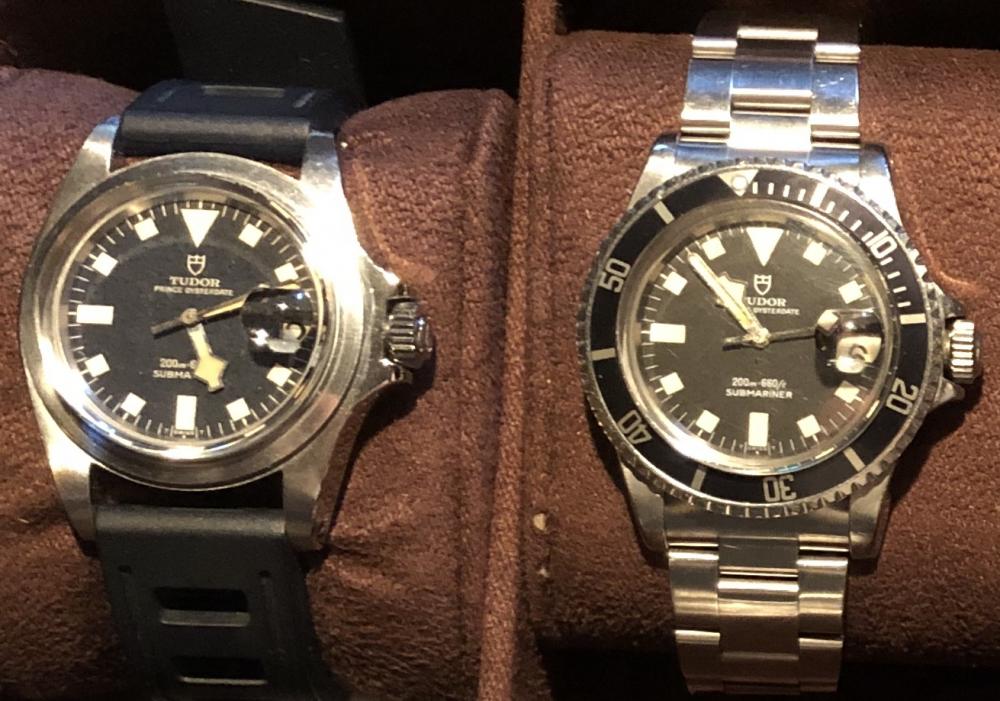

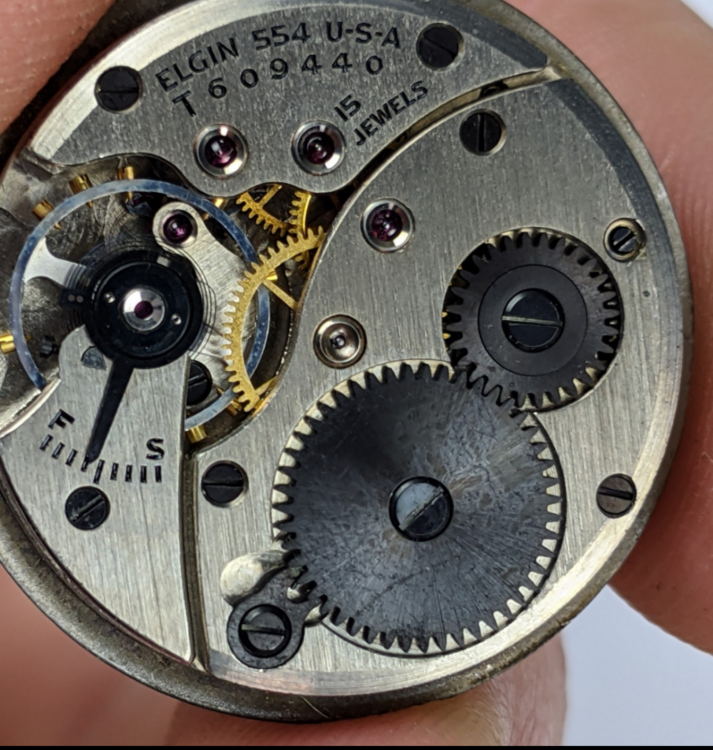
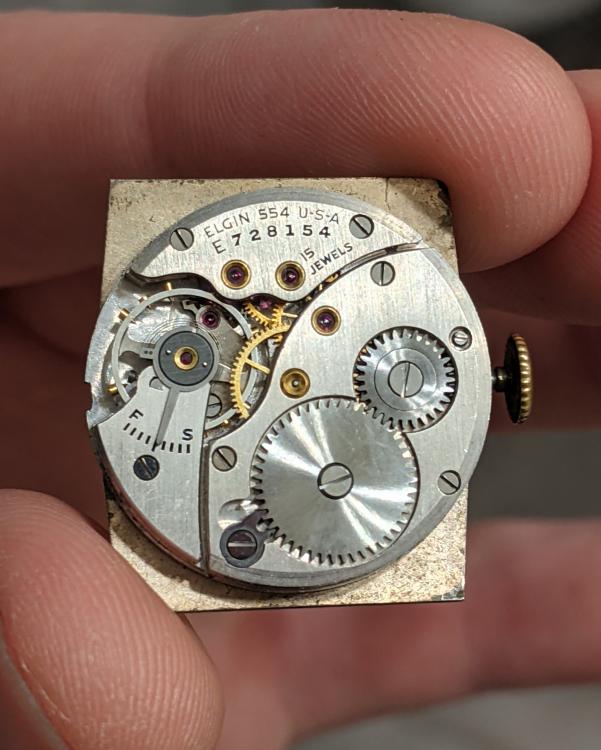

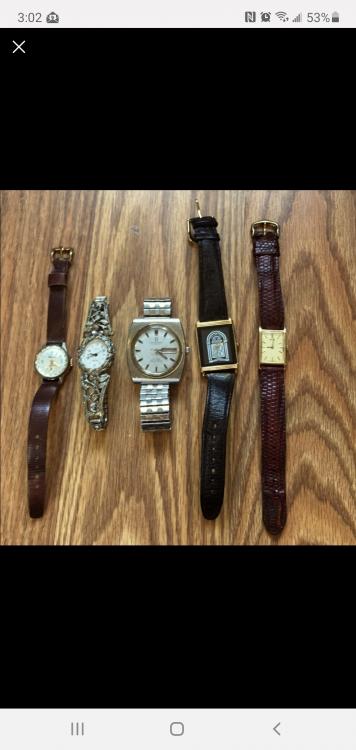
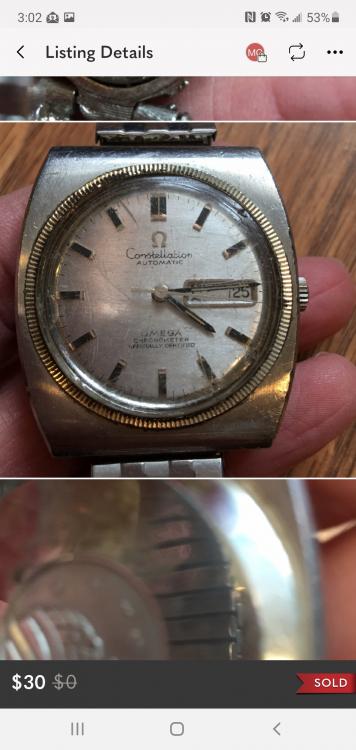

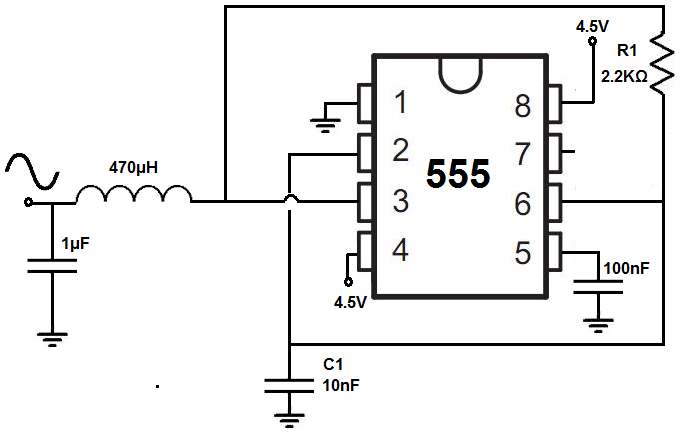


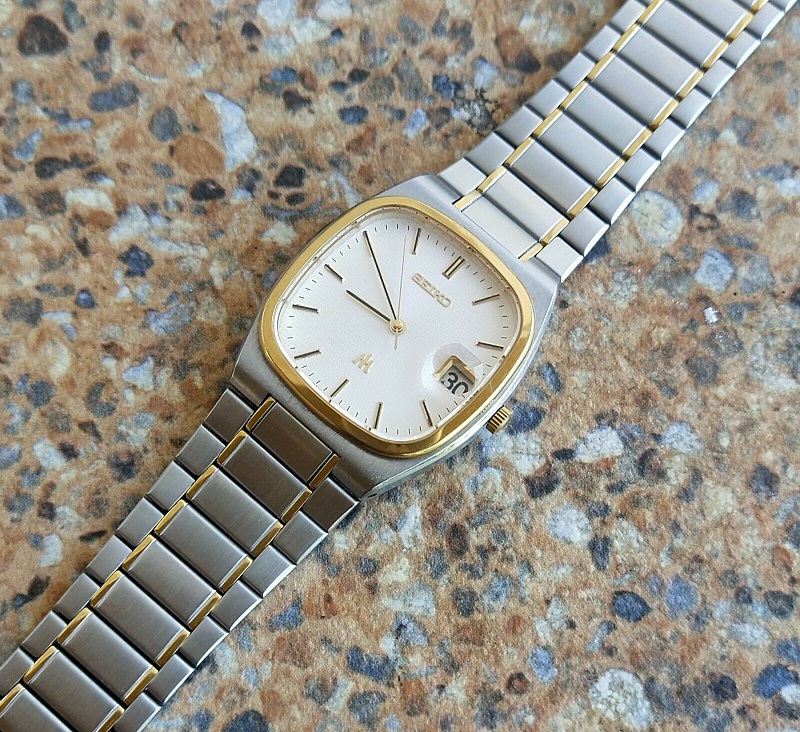
-Copy.jpg.b1605e838a357d1961f639a05a9d0e8f.jpg)
